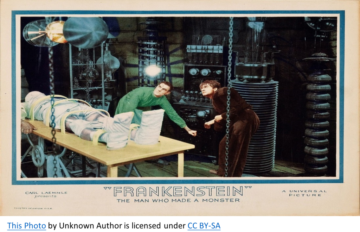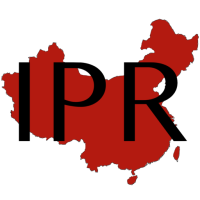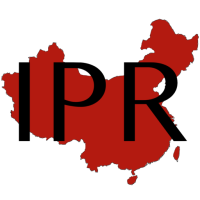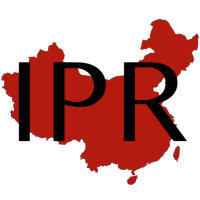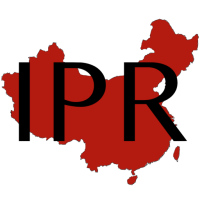
Here is a summary of the July 15, 2021 program on China’s “patent linkage” regime with my personal observations:
Overall Structure: In the July 15 program several individuals pointed out that China’s commitment in the Phase 1 Trade Agreement was to establish a “Mechanism for Early Resolution of Patent Disputes,” whereby there would be a mechanism “for the timely resolution of disputes concerning the validity or infringement of an applicable patent claiming an approved pharmaceutical product or its approved method of use.” A patent linkage regime, by contrast, “refers to the practice of national pharmaceutical registration authorities ‘linking’ the granting of marketing approval – that is, the right to market a drug – with the patent status of an originator.” The difference of emphasis in the two concepts may have impacted the drafting of China’s Early Resolution Mechanism regime (“ERM”). A linkage regime is more likely to establish rights by creating a legal “link”. For example, this “link” could include a doctrine of “artificial infringement” by reason of an application for marketing approval. An ERM primarily provides for expedited procedures, and may not require changes to rights or remedies. For example, China’s ERM does such not provide for an artificial infringement mechanism where marketing approval constitutes an act of infringement, nor does it significantly affect a range of other civil law or civil procedure areas, including invalidity procedures by CNIPA, lack of a combined invalidity/infringement mechanism by the courts, and administrative enforcement mechanisms by CNIPA.
2. Coverage: The ERM process covers compound pharmaceutical products, patents for pharmaceutical compositions comprising active ingredients, and use patents. According to Section 4 of the published explanation of CNIPA/NMPA, it does not cover biologics and traditional Chinese medicine. Nor does it cover intermediates, metabolites, crystal forms, formulation directions, or diagnostic methods. The absence of biologics is concerning as biologics were specifically covered by the Phase 1 Trade Agreement.
3. Sequence for the ERM: The ERM is triggered by marketing approval application where a generic applicant declares (1) there is no information on any relevant patent; (2) the relevant patent is expired or has been invalidated; (3) the generic applicant undertakes to not market the product covered by the patent until it has expired; or (4) the relevant patent is invalid or the generic product is non-infringing. Within 45 days of this notification, the innovator may file a civil law suit or an administrative enforcement action. After acceptance of this case, the NMPA will commence a nine-month stay period governing marketing approval while conducting technical evaluation of the generic challenger. If the generic challenger is successful, it will ultimately be granted a twelve-month market exclusivity period.
4. Parallel Systems: Both the drafts and final texts for China’s ERM regime have maintained a parallel system including both the courts and the administrative patent agency (CNIPA). This is consistent with the expectations of the Phase 1 Trade Agreement. CNIPA’s expedited administrative procedures may ultimately give it distinct advantages. Foreigners, however, are likely to be more comfortable and familiar with the judicial process. Invalidity procedures will follow their usual practices and are currently unaffected by the new rules or JI. Due to the short time-frames, an invalidity request is not likely to stay a pending civil or administrative ERM case. It is unclear what will happen if an infringement determination is made within the requisite time frame and the patent is subsequently invalidated. The processes could be further streamlined if various experiments in combining invalidity and infringement determinations are accelerated and ultimately deployed in a linkage context. One speaker stated that the ERM cases in the courts will be relatively straightforward in light of the documentation will need to be produced for marketing approval. Another speaker believed that due to numerous gaps in the rules, the JI, and the law, there will be a continuing need to update the rules and seek additional legislative clarity on procedures. The possibility of patents being subsequently being invalidated may also lead courts to require innovators to indemnify generic companies as a condition for granting injunctive relief.
5. Getting Notified and Getting Ready: Several speakers noted that foreign innovators should carefully review their license agreements and practices regarding regulatory approval and patent litigation in China, in order to ensure that they can respond in a timely fashion to an NMPA Notification. Service will be made upon designated parties pursuant to the market authorizations they obtained. Neither the Judicial Interpretation nor the recently released rules of NMPA/CNIPA reference China’s Civil Procedure Law regarding suspension of relevant time limits when a matter involves a foreign element. My guess is that due to the short time frames for civil and administrative litigation, it is likely that the courts and litigants will rely upon the service provisions upon a domestic party to avoid extension of time limits which would otherwise apply under the CPL. The relevant provision governing service is Article 13 of the JI, which provides “Service of process by the People’s Court on the parties shall be made to the contact person, mailing address, e-mail, etc. posted on the platform established by the relevant administrative department of the State Council in accordance with the Linkage Measures, which shall be deemed effective. After the parties submit the confirmation of the address for service to the People’s Court, the People’s Court may also serve to the address for service specified in the confirmation.” Domestic representatives of foreign companies should be prepared for the possibility of becoming involved in a pharmaceutical patent dispute under this new regime, and may also wish to have relevant paper work including necessarily formalities, such as powers of attorney, at the ready.
6. Advantages of Each Venue: The Beijing IP Court is the judicial venue for linkage disputes. CNIPA will establish its own specialized board for linkage administrative disputes. Given the pressing docket at the courts, there will be a distinct need to prioritize ERM disputes. Different procedural rules in each venue may affect the handling of a case and will need to be reviewed carefully in choosing the mechanism for an ERM litigation. I am hopeful that competition between the courts and administrative agencies will spur both of them to improvements in adjudication.
7. Transparency: The Beijing IP Court, under its former President, Su Chi, developed a strong reputation for transparency. Nonetheless, as the recent Article 63.3 Request of the EU makes clear, not all Chinese IP cases are being published. Insuring consistency of determinations by publishing decisions and other guidance is key to fair and expedited adjudication. I hope that the Beijing IP Court continues to build on its strong foundation. The CNIPA measures provides that the administrative ruling, upon being rendered, shall be served to the parties and made public. Both comprehensive transparency and ease of access to published cases should be priorities.
8. Patent Misuse: The JI establishes a troubling “patent misuse” type provision, which would require indemnifying a generic company if the innovator has filed for a patent knowing that it is invalid, or knowing that the product does not fall within the scope of claims of the patent. The provision is likely based on Article 20 of the newly amended Patent Law and perhaps Article 55 of the Anti-Monopoly Law. This provision is in the JI only. Its application is uncertain and potentially troubling.
9. All Quiet on the Legislative Front – for now: My view, which was generally shared by the panel, is there will no immediate further legislative developments directly affecting these measures. The reasons are many: the CNIPA/NMPA measures were enacted pursuant to statutory authority of the State Council; there is currently no plan for patent law implementing regulations on the State Council legislation timetable; and there may be no need to address any issues that evolve until the courts and agencies have gained more experience in implementing China’s linkage regime.
10. All Quiet on the Trade Front – for now: Regulatory Data Protection and an ERM for biologics remain open pharmaceutical IP issues. Will there be a Phase 2 Trade Agreement?
I will be posting a link to the recording of the July 15 program once it becomes available.
Please share your observations and opinions!
- 2021
- access
- Action
- active
- Additional
- Agreement
- agreements
- All
- Application
- article
- authority
- Beijing
- Berkeley
- board
- build
- cambridge
- cases
- China
- chinese
- claims
- Companies
- company
- competition
- Compound
- continues
- Council
- Court
- Courts
- Creating
- Crystal
- data
- Dispute
- Early
- Effective
- etc
- EU
- experience
- fair
- Fashion
- follow
- Free
- Handling
- HTTPS
- Including
- information
- Innovator
- innovators
- involved
- IP
- issues
- IT
- July
- Key
- Law
- lead
- Legal
- Legislation
- License
- light
- LINK
- Litigation
- Market
- Marketing
- medicine
- notification
- open
- order
- Other
- Paper
- patent
- Patents
- Pharmaceutical
- platform
- president
- Produced
- Product
- Products
- Program
- public
- Publishing
- range
- reasons
- Registration
- regulations
- relief
- review
- rules
- ruling
- Share
- shared
- Short
- Speaker
- speakers
- State
- Status
- stay
- successful
- system
- Systems
- Technical
- time
- trade
- Transparency
- Update
- View
- within
- WordPress
- Work

